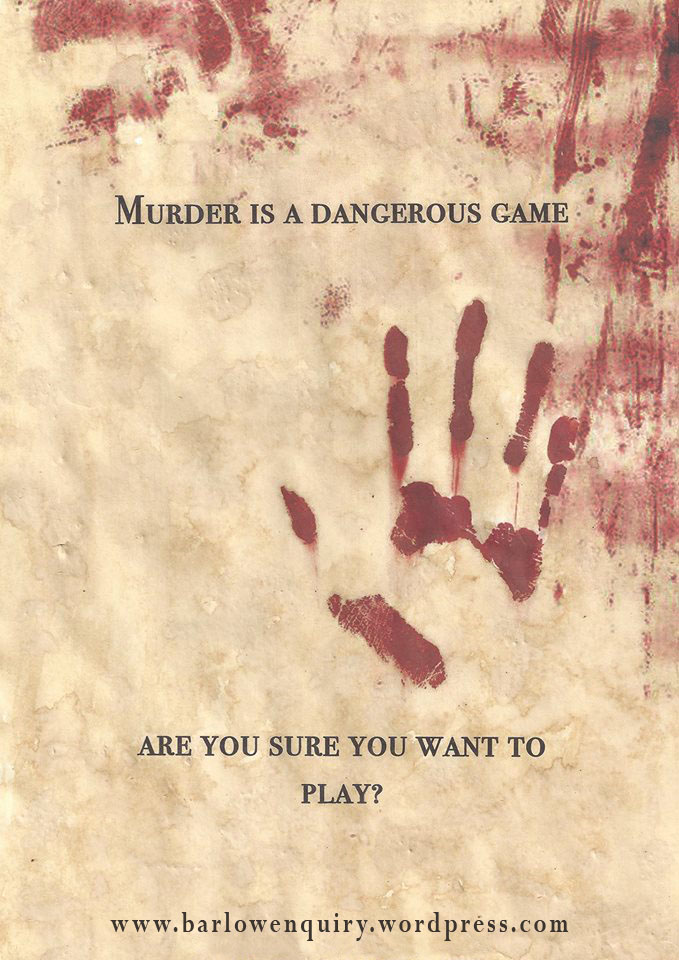The Story Lab – Project Brief 3: The Barlow Enquiry

The direction we aim to take with Project Brief 4 is to create an Alternate Reality Game (ARG) around the mysterious identity of a long dead (fictional) serial killer named ‘The Dead Ringer’ who was active in the year 1901. Named for the way the his victims were found, the killer murdered five people and was never brought to justice, yet a few suspects were believed to have been ‘The Right Hand Man’ and our main character Atticus Barlow will provide the clues for the game as he begins investigating in the year 2016.
Based around the personal journey of Atticus Barlow, The Barlow Enquiry will allow players to follow the journey through his blog and social media platforms as he researches the events of 1901 surrounding the five deaths of prominent social figures in early 20th Century Melbourne. The character of Atticus Barlow will be the audience’s connection point to the story as he details his progress through the case and his personal life. The central focus of the project will be the creation of an in depth and three-dimensional person in Atticus Barlow as this will help the audience connect to the game. Allowing the players to have insight into Atticus’ emotional journey will provide a way for them to invest in the game. After the death of his grandfather, Atticus has retreated away from the outside world and began researching his family tree until he came across his great-great grandfather, William James Barlow, who died under mysterious circumstances in 1901. When Atticus makes the connection to the infamous serial killer, he tries to get the public to help solve the mystery to gain peace and acceptance of his current situation, if he achieve this he can find the confidence to move on.
Another entry point will be the mystery of who is ‘The Right Hand Man’ a serial killer who murdered five people in the year 1901 but was never caught. Players will have clues laid out for them over the course of a few weeks through Atticus Barlow’s blog. As he discovers them he will post the information for the followers to help them piece together the mysterious identity.
To further the ARG elements of the game, we will create another fictional user of the blog who will also have a vested yet unknown interest in the cold case. They will comment on Atticus’ blog, adding further evidence from their own investigations and will be the catalyst for the real world component of the investigation. They will have some documents that will aid the audience’s investigation but remain anonymous, providing clues to lead players to a location in real life.
My role in the group will be to manage Atticus Barlow’s blog and social media accounts, creating a real persona. To do this I will not only focus on the case but build up his social life, posting pictures on Instagram and tweeting about how he is feeling about the break up and the case. I will also manage the calculated release of information to provide enough clues for players to mull over, riding the line between too little information that they lose interest and too much that they solve the case too early.
My group for this project are really dedicated to creating a fully immersive and well put together experience and we are all clear on and are comfortable in our roles and we are excited for The Barlow Experience to take shape.






